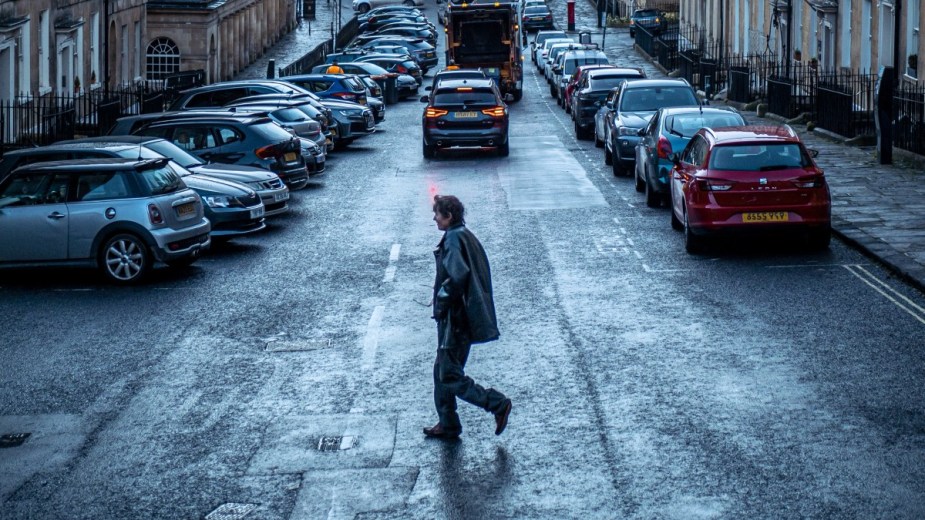
Is Jaywalking Across a Street Still a Crime?
You’ve likely encountered a scenario in which you’re in a hurry and want to cross the street, but the crosswalk is far away. Your intended destination is directly across the street, whether it’s your parked car or a store you want to visit. Like many people, you probably went ahead and crossed the road after it was clear of traffic. You jaywalked. Jaywalking is also when a pedestrian crosses an intersection with a red traffic light. While jaywalking across a street is very common, is it still a crime?
Is jaywalking still illegal?

In most locations in the United States, jaywalking across a street is still a crime. While there is no federal statute that makes jaywalking a crime, most states have laws that make it illegal. Also, the jaywalking laws vary from state to state. Much of this variance is due to how states view the rights of pedestrians.
Additionally, states have different interpretations of “whether the pedestrian was in a ‘controlled’ crossing, with a crosswalk, or an ‘uncontrolled’ crossing, with no markings or signals,” as detailed by HowStuffWorks.
Another complicating factor is traffic signals have different meanings for some states. Also, some states have “distracted walking” laws. These laws enable the police to issue citations for such things as texting while crossing an intersection. Furthermore, there are some states, such as Michigan, that have no jaywalking or crosswalk laws. They leave it up to local towns and cities to create their own regulations.
In reality, the police rarely issue citations for only jaywalking. When citations are issued, the jaywalking is usually accompanied by another potentially harmful activity. This includes distracted walking or public intoxication.
Why is jaywalking across a street still a crime?

The reason why jaywalking across a street is still a crime in most locations in the U.S. is pedestrian safety. According to the National Highway Traffic Safety Administration (NHTSA), in 2020 in the U.S., 6,516 pedestrians were killed, and an estimated 55,000 pedestrians were injured. Also, the NHTSA estimates a 13% increase in pedestrian deaths in 2021. Also, 70% of pedestrian deaths were outside of crosswalks and intersections — when many pedestrians jaywalked.
Do pedestrians have the right of way — even when jaywalking?

The laws for the right of way for pedestrians also vary from state to state. However, in general, for crosswalks and intersections with traffic signals and stop signs, drivers must yield the right of way to pedestrians. Conversely, in most states, pedestrians must yield the right of way to drivers when there is not an established place for them to cross the street.
In 19 states, though, drivers must yield the right of way to pedestrians at any spot on a roadway. Also, in even more states, drivers must stop and yield to pedestrians when they are close to a car.
All of these variances in jaywalking and right of way laws may seem confusing. However, for the most part, in practice, the drivers are more likely to be cited. In its publication, “Pedestrian Safety Enforcement Operations: A How-To Guide,” the NHTSA instructs police officers to “cite both drivers and pedestrians, but focus on drivers, as they are the less vulnerable population.” Essentially, since pedestrians are more likely to get injured or killed in a collision with a car, a greater responsibility falls on the driver.
Why is jaywalking called jaywalking?
Jaywalking got its name from the older and outdated term, “jay-driving.” Jay-driving was when drivers of horse-drawn carriages drove on the wrong side of the road. Also, the word “jay” has negative connotations, for it means someone that is inexperienced or “backward” — kind of like the way people use the derogatory “hick” slang word today.
Also, in its earliest use, jaywalking didn’t describe illegally crossing a street. Instead, it described bad sidewalk manners. Streets started featuring crosswalks in 1911, and by the 1930s, more state governments enacted jaywalking laws.
Enforcement of jaywalking laws disproportionately targets people of color
As noted earlier, it’s technically illegal to jaywalk in most U.S. states, but the police rarely enforce these laws. However, a sad truth regarding this enforcement is that when done, it disproportionately targets people of color, as reported by Salon. An example of this is the college town of Champaign-Urbana, Illinois. Despite the mostly White population of Champaign-Urbana, 89% of people cited for jaywalking are Black.
Because of this disproportionate targeting of people of color, many people believe that laws that make jaywalking a crime should be banned. Salon also notes that when jaywalking is enforced, it is often done as means of revenue generation, not for safety reasons.


